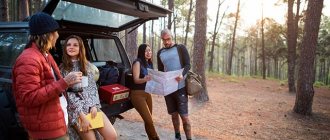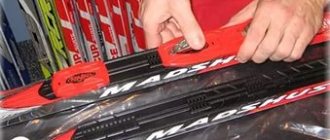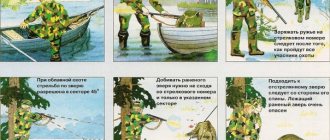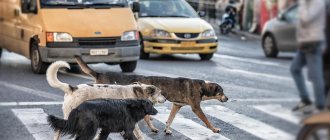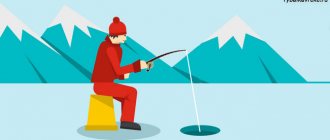The most important requirement for a tourist trip is to ensure the maximum possible safety of its implementation. There is always an element of chance in a tourist trip, and it is impossible to completely eliminate it, but it is necessary to foresee and reduce it to a minimum. For the most part, dangers and cases of injury are created by tourists themselves and provoke them by their wrong actions.
This leaflet was compiled based on an analysis of cases of injuries during hiking and introduces tourists to safety measures and rules of conduct while traveling.
General rules of conduct when traveling
The tourist is obliged:
- Maintain discipline, follow all instructions of the guide, do not allow unauthorized absences;
- Treat nature with care, do not make fires or leave them unattended without the permission of the guide;
- Do not light fires and stoves with flammable substances, do not light candles and matches in tents, and do not throw burning matches and cigarette butts in the forest.
- Do not cut down living trees, do not break out travertine buildings, do not trample vegetation on thermal areas, etc.
- Inform the guide in a timely manner about the slightest signs of illness, fatigue, abrasions and injuries, exercise self-control, and maintain personal hygiene.
- Do not swim in unexplored bodies of water and do not cross water barriers without the permission of the guide;
- Do not drink water from unverified sources and reservoirs, observe the established drinking regime along the route;
- Do not eat unfamiliar mushrooms, berries and other plants;
- Provide assistance to comrades in the group, as well as to all people in distress in the travel area;
- Maintain rest stops and parking areas in proper sanitary condition;
- Take care of group tourist equipment and inventory.
ENSURING SAFETY IN MOUNTAIN TOURISM
Page 1 of 6Next ⇒ENSURING SAFETY IN MOUNTAIN TOURISM
The basis of safety in mountain tourism is knowledge of the dangers of the mountains and the route, the correct selection of equipment, mastery of techniques and tactics for overcoming natural obstacles, the correct formation of a group, the correct choice of tactics and techniques for completing the route.
DANGERS IN THE MOUNTAINS
Traveling in the mountains involves overcoming numerous dangers associated with the terrain, meteorological conditions and directly with the actions of mountain tourists and climbers themselves. Timely recognition of hazards is facilitated by knowledge of the nature and causes of phenomena that pose a danger to humans, which makes it possible to eliminate or significantly reduce the likelihood of accidents and dangerous situations.
The real danger in the mountains can be:
1. natural phenomena - earthquakes, avalanches, rockfalls, collapses of ice and snow cornices, cracks in glaciers, mudflows, mountain rivers.
2. unfavorable climatic conditions - wind, thunderstorm, sharp fluctuations in temperature and humidity, rain, snowfall, exposure to the sun, darkness.
All these natural factors can become many times more complicated if climbers have the wrong attitude towards organizing mountain climbing and observing safety measures.
The reasons leading to accidents are:
1. insufficient physical and technical preparedness of the group, inconsistency of the chosen route with the strength and experience of tourists;
2. incorrect selection of the group, lack of similarity;
3. insufficient experience and authority of the group leader;
4. insufficient discipline in the group;
5. lack of a clear distribution of responsibilities;
6. insufficient knowledge of the route and unreasonable changes;
7. ignorance of dangers in the mountains and safety measures;
8. neglect of insurance or its incorrect application;
9. overestimation of one’s own strengths and capabilities and underestimation of the difficulties of the route;
10. weakening of attention, especially during descents;
11. poor quality or insufficient equipment;
1. lack of food;
12. lack or inadequacy of clothing;
13. lack of medications necessary to provide medical care;
14. poor organization of recreation, lack of control over the health of group members.
Altitude sickness
At altitude, due to lack of oxygen, shortness of breath occurs even with light exertion, and performance decreases. The absorption of water and nutrients and the secretion of gastric juice are disrupted. Fats are especially poorly digested. Visual acuity decreases, vision becomes “foggy,” and night vision weakens. The process of dehydration of the body is rapidly developing. Moisture losses reach 7-10 liters per day. Oxygen starvation of brain cells occurs, which causes mental disorders. The body's thermoregulation changes, increasing the possibility of frostbite. Pain sensitivity weakens until it is completely lost. Inflammation of the lungs develops, often leading to death.
All recommendations for preventive measures boil down to limiting the duration of travel, regular training before the trip, excellent physical condition of the tourist, medical examination before the trip. You cannot go to the mountains after the flu, pneumonia, or sore throat.
A diet of up to 5 thousand calories is recommended, and the carbohydrate content should be increased by 10% (primarily glucose). Fluid consumption is at least 4-5 liters per day. The dose of vitamin B, C, PP, folic acid, vitamin A is increased. It is useful to take ginseng, eleutherococcus, acclimatizin (a mixture of eleutherococcus, lemongrass and yellow sugar).
It must be remembered that this disease can manifest itself either suddenly or gradually. Before a sharp deterioration in the condition, there may be a stage of excitement, euphoria, reminiscent of oxygen intoxication. There is a feeling of one’s own strength and power. The patient becomes talkative, cheerful, and cannot really assess the situation. Following this, depression sets in, fantastic images and bad premonitions arise. The patient himself believes that his brain works clearly.
Therefore, when climbing together, you need to very carefully monitor the health of those around you. When the first signs of illness appear, it is necessary to free the patient from at least part of the load, slow down the pace, or even stop.
If you have a headache, you should take analgin or another medicine; if you have nausea and vomiting, you should take aeron, validol, sour fruits and juices, and weak tea.
If pneumonia is suspected, it is necessary to urgently descend from the mountains and take the patient to the hospital.
Acclimatization. With a long stay at altitude, a number of changes occur in the body, the essence of which boils down to the preservation of normal human life without the use of auxiliary means and drugs.
Other dangers in the mountains.
Hazards, injuries and illnesses associated with wild animals and poisonous plants. Tourists need to take into account that the closer they are to nature, the more likely it is that they will encounter poisonous animals, as well as animals that carry diseases.
Incorrect operation of heating devices . In the mountains, where they often have to trek through treeless areas, tourists are forced to use flammable gases, kerosene or gasoline as fuel. These are explosive, flammable substances.
Fatigue. Stress, fatigue, apathy are dangerous, because in this case a person loses attentiveness, loses the ability to adequately assess external factors and respond to them. Particularly dangerous on descents, at the end of the day or at the end of a route. “It’s more difficult not to go up safely, but to go down safely” (Konstantin Mironov). If a person is tired, this is not a reason to be ashamed of his condition. It is necessary to notify the whole group about this and take a long break. Drink and chew something warm and sweet, for example, tea from a thermos and chocolate. If there is such a need, then ask your colleagues to unload the backpack.
Hypoxia - lack of oxygen in tissues - causes weakness, deterioration of health, and decreased performance. Thus, similar rocks at an altitude of 3000 m can be easily overcome, but at an altitude of 5000-6000 m they can become a serious obstacle. Hypoxia can lead to mountain sickness. It is necessary to perform an acclimatization regime.
Dangers caused by improper actions of tourists.
Walking alone, neglecting insurance, underestimating difficulties, general lack of forethought and irresponsibility, lack of attention, overwork, going to the mountains in the presence of chronic diseases, technical unpreparedness.
Psychological factor. Panic.
Physical and technical unpreparedness of the athlete.
Bad, old equipment.
EQUIPMENT
A tourist’s equipment on a mountain route can be divided into several large groups. This is personal, personal bivouac, group bivouac, special personal, special group equipment. The path from heavy canvas to lightweight cordura; from fur, down and padding polyester to polar and windblock, from padded jackets to gore-tex, from “carrots” to ice screws, from cutting steps to titanium crampons - this is the path of equipment evolution.
Personal equipment
Clothes and shoes . It is impossible to combine all the requirements of a mountain tourist in one outfit. Therefore, mountain tourists take quite a lot of different things to the mountains, for all occasions - to feel comfortable in the rain, in the heat and in the cold, and at the same time all the clothes weigh several kilograms.
Underwear
. Previously, they wore regular shorts and T-shirts. Now the so-called has appeared. "thermal underwear". Its main task is to remove moisture from the body. Sweat evaporates from the body and passes freely through thermal underwear. A very good thing, although expensive ($30 to $80). For warm weather, you can take sweatpants or light shorts.
Clothes for hot weather . For moving in the heat, you need a long-sleeve T-shirt. Long sleeves are needed to protect the skin from the mountain sun.
Warm pants and sweater
. With the advent of a new material - polar, wool almost lost its position. Polar does not absorb moisture, i.e. if you wet it and squeeze it out, it will become almost dry. Even wet, it warms. Polar weighs almost nothing. Polar comes in three types - from “hundredth” to “three hundredth”. The hundredth is the thinnest, used as a thick T-shirt, light sweatshirt, the three hundredth is the thickest, used for warm sweaters, jackets and pants. If you buy a jacket made of Polar (its official name is Polartec), it will cost relatively expensive - about $30-40. The only drawback of polar is closely related to its advantage - air permeability. The polar is blown by the wind, and if the wind is strong, it will be uncomfortable.
Wind protection
. These are lightweight pants and a jacket whose sole purpose is to keep out the wind. With wind protection and a three-hundredth polar guard, you can easily work on snow and ice and feel quite comfortable. You will need a wind mask to protect your face from the wind.
Rain protection
. For this, ponchos (a cape made of thin nylon that is worn over the head) or anoraks are used - light jackets made of waterproof material, such as Taffeta or nylon. Unfortunately, these jackets protect against water from the outside, but do not wick moisture away from the inside. If you spend 10-20 minutes in such a jacket, it will become completely wet from the inside. It’s a small pleasure, but it’s easy to freeze in the rain for a short time.
Jacket
. For a mountain hike, a jacket made of Gore-Tex fabric is optimal. This is, in fact, not a fabric, but a membrane, the size of the holes is several thousand times larger than the diameter of a water molecule, but several hundred times smaller than the diameter of a drop of water. Therefore, it allows your sweat to escape, but does not allow rain to penetrate under the jacket. Experience shows that jackets from $300-350 really work.
Self-discharges
. It is difficult to put on and take off pants without taking off mountain boots, and especially crampons. For this purpose, self-resets were invented - pants with detachable zippers on the sides. The thing is extremely convenient, but not applicable everywhere. Self-removing pants are usually sewn from quite strong fabric, such as cordura or avisent - but such pants are not needed for a low-grade summer camping trip.
Socks
. Even with very good shoes you can get cold feet. Usually in the mountains they wear one cotton sock and one or two pairs of woolen ones. This is done to remove sweat from the foot and protect it from unnecessary friction. Recently, many different polar and “thermal” socks have appeared. Some of them are really good substitutes for wool and even surpass it in quality, but they are quite expensive (up to $20).
Boots
. They should be waterproof, comfortable, and moderately heavy (to trample steps in the snow and work in crampons). The Russian industry produces only one type of boots, which are more or less suitable for the mountains. These are the so-called “Vibrams”, they come in single, one-and-a-half and double. The double vibram boot is very heavy and not very warm (in its class). For simple mountain hikes, single and one-and-a-half vibrams are quite suitable. They behave satisfactorily for 1-2 seasons. If you soak them, they hold water. Cats stand on them normally. People wear foreign-made boots when going to heights.
Flashlights
. When moving on snow, small scree, stones and snow fall into the boots from above. A flashlight is a “pipe” made of nylon, which, starting under the knee and ending at the sole, eliminates this trouble. In the simplest case, a flashlight is a pipe with two rubber bands. For convenience, they can be made in the manner of self-resets, with detachable zippers on the side. The thing is very necessary and convenient, especially when working for a long time in the snow.
Shoe covers
- boots made of nylon, sometimes insulated. Shoe covers are worn with crampons, otherwise the sole will instantly tear on the rocks. Relevant at high altitudes, in winter, on snow and ice routes. Not needed in low categories.
Gloves . In cold rain or snow pellets, your hands freeze very quickly. Polara gloves are suitable for protection from the cold. In strong winds and frost, use mittens. To work with rope you will need light, non-insulated tops made of cordura or avisent.
Headdress. To protect your head from the sun, you will need a Panama hat or cap. To protect against the cold - a polar cap and strip.
Glasses . To work on a glacier, you definitely need dark glasses, and plastic ones are not suitable - they block only the visible part of the spectrum, creating the illusion of protection, and ultraviolet radiation gets into your eyes. The result is snow blindness. Either any dark glass glasses or special plastic with UV protection will do.
Personal bivouac equipment
Rug , karemat, foam is a polyurethane foam mat 1 to 2 cm thick, about 50 cm wide and 180 cm long. This rug insulates you almost 100% from the ground. In summer it is quite enough, the only possible inconvenience is that it does not hide strong unevenness in the terrain. If you are preparing to spend the night on the rocks, be sure to clear the area and place ropes and an empty backpack under the rug. Poor or insufficient rest is the number one cause of injuries in mountain tourism!
Sleeping bag . Sleeping bags are different, but, as a rule, they use 3-layer padding polyester or down sleeping bags. Down is warmer, takes up less space, but it is more expensive and is afraid of water. If you are going in the summer and not very high, padding polyester is the best choice.
Seat , hob, etc. - this is a small “foam” with a holding elastic band. It is always behind the tourist’s back, and if you need to sit down, sit on the seat, not on the snow. The thing is convenient, weighs little. As a rule, experienced tourists are distinguished by the fact that their seats are thick.
Flashlight . A headlamp is an extremely convenient thing for getting up early, reconnaissance and bivouac work in the evening - wherever you need light and free hands. Good flashlights (Vaude, Petzl, etc.) are expensive. Domestic headlamps are not bad, but you need to buy an adapter for AA batteries and remake the headband (otherwise it will immediately fly off). Ideally, everyone has a headlamp.
CLMN . Mug, spoon, bowl, knife. It’s convenient to keep all this in one bag (the knife should be on your belt or neck), and even with a brush for washing (it’s unpleasant to pick up cold firn or stones at the bottom of an icy mountain river with your bare hands).
Packing equipment in a backpack
The requirements for packing a backpack are very strict: with the smallest external dimensions, it must have as much internal volume as possible, and its significant weight must be combined with absolute ease of carrying by a tourist. The backpack should be laid out so that it becomes like a part of the tourist’s body and does not harm posture, but contributes to its preservation.
A backpack shaped like a ball or a cucumber will definitely rub your back. The lower part of the backpack should be concave, repeating the shape of the lower back, and fit snugly against it. The backpack should lean against your back and not put pressure on it. This requirement is best met when using easel backpacks. In ordinary backpacks, you have to put soft things on your back (not in a thick layer) and adjust the length of the straps.
The general rule when packing equipment is: heavy items down, soft items toward the back, bulky and fragile items up, essential items in the pockets. It is unacceptable for poorly packed items to rattle around in your backpack while on the move.
It is not advisable to place large items on the outside of the backpack or tie them to the bottom. However, sometimes, when there is a lot of things or the backpack is small, you have to carry a tent, sleeping bag, etc. In this case, the objects (previously wrapped in waterproof material) must be pulled as tightly as possible with a rope to the backpack. It is unacceptable to tie things, such as buckets or shoes, to the back of the backpack, or to load the back pocket with heavy objects such as an axe, tin cans, etc.
Stowing should ensure that the backpack is stable on your back. Therefore, you should fill its lower corners especially tightly and by pre-packing things in “blocks” (bags) to prevent them from moving in the backpack under the influence of shocks or shaking. This packaging allows you to quickly get the things you need out of your backpack.
For easily breakable items, special protective covers must be made. Thus, a thermometer for measuring air temperature can be safely carried in a backpack if it is placed in a piece of metal tube with a diameter of about 2 cm and sealed with corks and foam pads.
The thermos must first be wrapped in soft things, the camera can be put in a pot or wrapped in soft things and placed closer to the valve of the backpack. The most “shock-hazardous” places of the backpack are at the bottom and outer pockets. You can't put anything breakable in there.
Rubber glue and gasoline should be carried in aluminum flasks. To avoid spilling medications in the first aid kit or other liquids on the necks of the bottles, it is recommended to wear rubber nipples or finger guards.
Equipment care
Poor care of equipment leads to its damage or loss. There are known cases when tourists were forced to stop traveling due to damage to boots recklessly left by the fire, burning of a tent from sparks from an unsuccessfully placed fire, bending of skis thrown without spacers, loss of matches, axes, buckets, etc. To avoid this, you should adhere to the following rules
When traveling, personal responsibility is established for each piece of equipment. When transferring an item temporarily to another person, demand that it be returned only to your own hands.
Use bright colors for easily lost items or tie them down. For example, paint grocery bags, cords, and shoe covers orange - and they will be clearly visible both in dark grass and on white snow. Carry a knife, compass, notepad, pencil on laces tied to your pocket (belt). Tie an elastic band to the ears of your glasses so that if you fall, they will not come off or break.
Before you think about going on vacation, check your equipment and make sure it is in good condition. Don’t put off inspecting and repairing your equipment until the morning. If possible, shelter your equipment from the weather and do not scatter it around the camp site.
Be very careful when drying things near an open fire or on heating devices. Drying shoes by the fire is especially risky. This can lead to its partial and sometimes complete unsuitability for further use. It is better to dry shoes by stuffing them with moisture-absorbing items - socks, rags, paper, straw.
Line of movement
Selecting a line of movement
. On mountain routes, it is usually determined by the presence of trails laid by local residents or tourists. Sometimes beginners try to ignore these routes, which is completely wrong. Even if from some point of the climb it may seem that there is a shorter path to the pass and the trail in vain “twists” extra serpentines, it is still better to believe in the “smart” trail. This path, as a rule, turns out to be the most economical and safe. You can straighten the bends of the trail only on descents, if the slope is not very great.
In the absence of trails in mountainous areas and when approaching an unknown pass, it is necessary to organize preliminary reconnaissance in order to choose the best route.
Driving route to the pass in summer
. Despite the variety of local conditions, the route to the pass is usually as follows.
Approach to the pass along the valley (preferably along a slope with a southern exposure or covered with sparse vegetation).
Next, traverse subalpine and alpine meadows and climb along screes, choosing their “dead” areas with large stones for the path. Then access to the glacier (along the end or side moraine, along the tongue of the glacier, etc.) and a relatively flat path along the glacier, bypassing icefalls and cracks to a snowy rise or the rocky wall of a pass saddle.
Climbing to the saddle on snow or rocks is usually done vertically, ensuring rockfall and avalanche safety. Among rocky areas, gently sloping ribs and buttresses are most suitable.
Driving route to the pass in winter
. In the forest zone in winter, tourists are advised to usually follow the summer trail, but when it gets warm, they should, if possible, go to the northern slope, and when it gets cold, to the southern one.
When leaving the forest, it is advisable to stick to the bottom of the gorge (river bed). If the river is not frozen, then snow bridges created by previously fallen avalanches can be used to cross.
Climbing the glacier is straight from his tongue and in no case under the sheep’s foreheads. Walking along the center of the glacier, it is better to choose concave places on its surface and avoid convex ones. The upper cirque of the glacier is usually overcome in the middle, if necessary, taking off the skis and moving straight “head-on”.
Rocky areas
Movement on rocks requires the application of the “three points of support” rule. This means: you need to move in such a way that in more or less difficult areas, while moving one limb through the air, the others do not come off the supports.
On light rocks, the hands usually only maintain balance and actively work only where there is no comfortable and reliable support for the feet. The torso should be kept as vertical as possible, and the arms and legs should be spread at least shoulder width apart. You should rest on the ledges with the inner welts of your boots. When using the grip, do not press against the rocks. This will provide better conditions for footwork. You need to move smoothly, without jerking - this makes it easier to maintain balance and save energy.
To move, you need to alternately use stops and spacers, preferring the latter: with spacers, there is less risk of failure and stress on the fingers. In difficult areas, but convenient for moving with a spreader, you need to move straight up. If you need to move to the side, you need to do this on easier areas.
If reliable supports are absent or insufficient in a rocky area, friction (on slabs, ridges) and wedging (in corners, crevices) should be used more fully.
Snow slopes and glaciers
Movement on snowy slopes in the mountains, if there is no special equipment, is permissible on simple snowfields, gentle, safe climbs to a pass, or when crossing firn plateaus.
When moving, you need to use an alpenstock (ice ax) and shoes with hard soles, since the main efforts when walking in the snow are spent on trampling tracks, knocking out steps and maintaining balance.
A tourist should not sharply kick into the snow - it is better to compact the footprint in it with two or three pressures. When moving on fragile crust, you should not try to stay on its surface. It’s better to break through the crust and trample down the step. After all, everyone must take care of the comrades walking behind. Therefore, the distance between the steps must be proportioned by the guide to the ease of movement of the shortest tourist in the group. The body weight should be smoothly transferred from step to step, resting on the entire foot.
When driving on snow, a self-belay with an alpenstock is used. Climbing steep sections is organized “in three steps”: the tourist sticks an alpenstock in front of him and, holding onto it with his hands, drives first one, then the other leg into the snow. Then the alpenstock is moved higher, and the movements are repeated in the same sequence. On gentle slopes, tourists descend facing the valley and press their heels into the snow as tightly as possible. The alpenstock is held at the ready. Steep descents take place “in three steps” facing the slope.
If there is a glacier under the snow, then in order to avoid falling into a glacier crevice, you should move in groups of 2-4 people. The one in front should carefully probe the snow in front of him with an alpenstock.
Areas of soft ice with little steepness on glaciers open to snow can be overcome in shoes with deep grooved soles. Your feet should be placed on the ice so that they touch the entire foot.
Steeper sections of the open glacier can be climbed using crampons and cutting down steps on the slope with an ice ax. When walking on crampons, your feet should be placed slightly wider than when walking normally (so as not to catch your boots or trousers with your teeth). The “crampons” are placed on the ice with a light blow with all the main teeth at the same time. In some cases, it may be necessary to create additional support points - driving in ice hooks.
For confident movement on ice, snow and rocky terrain, a deeper knowledge of mountain tourism equipment and mountaineering techniques is required. Those who are planning to go on a mountain hike should definitely familiarize themselves with them in specialized literature and practice them almost before leaving for the mountains.
CROSSINGS
Crossing over rocks and snow
The most common way to overcome a narrow mountain stream is to cross rocks, when tourists step over or jump from one boulder to another, using an ice ax or alpenstock for protection. Before crossing, it is important to outline the route of movement and, if possible, check the stability of the supports. Before transferring the entire weight of your body onto a stone, it is advisable to test it with your foot and be prepared, if the support is unsteady, to jump onto the next boulder. In shallow places, tourists can sometimes throw stones into the water themselves to cross. It is necessary to cross mountain rivers in the morning, when the rapid melting of snow and ice has not yet begun.
They cross the snow bridge after reconnaissance of its strength. To do this, the bridge arch is inspected from the water and stones are thrown on it. If there is no complete confidence in the reliability of the bridge, crossing is permissible only one at a time with a rope safety net. The first to cross (crawl) the bridge while probing the snow with an ice ax is an experienced tourist on a belay without a backpack.
Canopy crossing
To organize a suspended crossing, one person needs to wade or swim across a mountain river in order to transfer the end of the rope to the opposite bank. Sometimes the rope can be thrown behind a stone, tree or rock on the opposite bank.
After the first tourist has crossed and the rope is securely fastened, they pull it tightly (preferably with a slope in the direction of movement) and begin to cross the rest of the group one by one. To do this, the next tourist is tied with a chest harness, makes a saddle, attaches two carabiners to the main rope and, moving his hands along it, crosses the river head first over the water. With a large slope, the crossing is carried out feet first.
To insure a tourist, two auxiliary ropes are attached to his chest harness through a carbine with a “guide” knot: one stretches to one side, the second to the other. With their help, you can pull out a weakened tourist or pull backpacks along the main rope.
When crossing a ford on a rope, it is strictly forbidden to use loops with gripping knots. Self-belaying in a similar way when moving along rope railings can be used on a “dry place” (descents, ascents, traverses), and the length of the self-belaying loop should be shorter than outstretched arms.
Mutual insurance
Mutual insurance and assistance is one of the immutable rules of travelers. Insurance is closely monitoring a tourist overcoming an obstacle and providing him with effective assistance to prevent a breakdown, falling, drowning, etc.
Belay methods vary depending on travel conditions, but the most common method is rope belay. The need to use insurance is determined by the group leader based on the degree of difficulty and profile of the path, the physical and moral condition of tourists and other reasons.
Preparation of insurance. Includes the following points: distribution of group members to overcome obstacles, determination of the order and sequence of actions of participants, actions of participants on belay; checking insurance funds; choosing a support location for the belay, testing it and, if necessary, processing (cleaning, strengthening the site, cutting off sharp edges on the ledge); checking the equipment and clothing of the participants (when belaying with a rope, for example, storm suits and mittens are required); providing reliable self-insurance for the insuring tourist.
Simultaneous insurance
. It is organized on relatively simple sections of the route and simple obstacles. In this case, all tourists, while on the move, simultaneously insure each other.
On foot, this is support when crossing a wall; in mountain travel, it is moving in teams along rocky areas or closed glaciers, etc.
In simple areas, you can organize gymnastic (ropeless) belaying. It consists of supporting the tourist and holding him when landing after a breakdown. One or two of the most experienced and physically strong members of the group are placed on gymnastic belay.
Railing insurance
. Rope railings are most often hung for insurance and the speed of passage of dangerous places by large groups of tourists. When moving along the railing, gymnastic techniques are used: hands are intercepted along a fixed rope, and legs rest against the slope.
Variable insurance
. It is used on more dangerous obstacles, when one tourist moves and others protect him.
When overcoming areas with rocky terrain or where you can firmly rest your feet, use a rope belay through the body of the belaying tourist. The most common types of such insurance are sitting through the lower back and standing over the shoulder.
If there are large stones, rocks, or trees, belaying over a ledge is more reliable. Sometimes a combination of these types of insurance is used. In the snow, belaying through poles, an ice ax, or skis firmly stuck into the snow is applicable.
The effectiveness of alternating rope belay is largely determined by the ability of the belaying tourist to take the correct position and position so that the jerk of the rope does not throw him off balance, and the ability to etch the rope during the jerk. Fixing the rope too tightly may break it or cause serious injury to the participant.
Conclusion.
The main cause of emergency situations in mountain (and other) hikes is the incorrect actions of tourists. External factors only exacerbate their negative consequences.
Not only the life and health of individual tourists (climbers), but also the life and health of all members of the group depend on compliance with the most basic safety measures, because a group member who is sick or injured on a hike jeopardizes the safety of the entire group. After all, it needs to be treated, unloaded, transported to the nearest populated area, and this is fraught with at least a loss of time and effort for all participants in the hike.
You should not neglect security measures, no matter how ridiculous and far-fetched they may seem at first glance. Who looks better - a funny person or a person in a cast (at best)?
ENSURING SAFETY IN MOUNTAIN TOURISM
The basis of safety in mountain tourism is knowledge of the dangers of the mountains and the route, the correct selection of equipment, mastery of techniques and tactics for overcoming natural obstacles, the correct formation of a group, the correct choice of tactics and techniques for completing the route.
DANGERS IN THE MOUNTAINS
Traveling in the mountains involves overcoming numerous dangers associated with the terrain, meteorological conditions and directly with the actions of mountain tourists and climbers themselves. Timely recognition of hazards is facilitated by knowledge of the nature and causes of phenomena that pose a danger to humans, which makes it possible to eliminate or significantly reduce the likelihood of accidents and dangerous situations.
The real danger in the mountains can be:
1. natural phenomena - earthquakes, avalanches, rockfalls, collapses of ice and snow cornices, cracks in glaciers, mudflows, mountain rivers.
2. unfavorable climatic conditions - wind, thunderstorm, sharp fluctuations in temperature and humidity, rain, snowfall, exposure to the sun, darkness.
All these natural factors can become many times more complicated if climbers have the wrong attitude towards organizing mountain climbing and observing safety measures.
The reasons leading to accidents are:
1. insufficient physical and technical preparedness of the group, inconsistency of the chosen route with the strength and experience of tourists;
2. incorrect selection of the group, lack of similarity;
3. insufficient experience and authority of the group leader;
4. insufficient discipline in the group;
5. lack of a clear distribution of responsibilities;
6. insufficient knowledge of the route and unreasonable changes;
7. ignorance of dangers in the mountains and safety measures;
8. neglect of insurance or its incorrect application;
9. overestimation of one’s own strengths and capabilities and underestimation of the difficulties of the route;
10. weakening of attention, especially during descents;
11. poor quality or insufficient equipment;
1. lack of food;
12. lack or inadequacy of clothing;
13. lack of medications necessary to provide medical care;
14. poor organization of recreation, lack of control over the health of group members.
1Next ⇒
What will happen to the Earth if its axis shifts by 6666 km? What will happen to the Earth? - I asked myself...
System of Protected Areas in the USA The study of specially protected natural areas (SPNA) in the USA is of particular interest for many reasons...
WHAT IS CONFIDENT BEHAVIOR IN INTERPERSONAL RELATIONSHIPS? Historically, there are three main patterns of differences that exist between...
What Causes Trends in Stock and Commodity Markets Freight Train Theory Explained My first 17 years of market research consisted of trying to figure out when...
Didn't find what you were looking for? Use Google search on the site:
Memo for participants in climbing Kamchatka volcanoes
It must be remembered that climbing the volcano can be safe only if the following rules are observed:
- It is necessary to unquestioningly and immediately fulfill all the requirements of the instructor during the ascent;
- You cannot lag behind the group and descend on your own;
- You cannot rest on a slope with your back turned to it;
- You cannot throw or push stones;
- You cannot walk around the crater on your own and come close to the edges of the crater;
- You should not try to measure t at the places where the gas-steam-water mixture exits with your hands, fingers, or other parts of the body;
- You cannot try to run while climbing or push the participants ahead;
- In case of a sharp deterioration in health, you must immediately inform the instructor;
- Citizens who are drunk or in an inadequate state are not allowed to climb;
- The instructor has the right to stop climbing if the situation becomes difficult due to natural conditions or a violation of safety rules by any of the participants;
- Do not forget about the need to preserve wildlife for your descendants.
Dangers and precautions related to weather conditions and climatic features of the travel area:
- On a bright sunny day, a light-colored hat will protect you from sunstroke;
- On a hot day, clothing should be appropriate to the weather and pace of movement; it will protect against overheating of the body and sunstroke;
- On a sunny day on snowfields, dark sunglasses will protect your corneas from burning;
- When driving in fog, there is a danger of losing orientation; the interval between tourists should be no more than 1 meter.
Actions to take if you are caught in an avalanche:
- If the avalanche falls high enough, quickly walk or run away from the avalanche to a safe place or take cover behind a rock ledge in a recess;
- If it is impossible to escape from the avalanche, free yourself from things, cover your nose and mouth with a mitten, scarf, collar and, moving in the avalanche using swimming movements of your arms, try to stay on the surface of the avalanche, moving to the edge where the avalanche speed is lower. When the avalanche has stopped, try to create space near your face and chest, it will help you breathe. If you can, move towards the top (the top can be determined by letting the saliva flow out of your mouth). Don't scream - the snow completely absorbs sounds, and screams and meaningless movements only deprive you of strength. Don't lose your composure, don't let yourself fall asleep. Remember that they are looking for you.
Safety precautions at pedestrian crossings.
During walking routes you must:
- Constantly monitor the condition of your feet, prevent abrasions and blisters (your chafed feet can ruin the mood not only for you, but for the entire group);
- If you are not feeling well, immediately inform the instructor;
- In the morning, when moving through tall grass, move only fully dressed (to avoid burns);
- It is prohibited to walk barefoot;
- When making long treks, follow in a group and follow all instructions of the instructor;
- When meeting a bear on the trail, strictly follow the instructions of the instructor (do not perform any aggressive actions, do not run away under any circumstances, as the instinct of a predator forces the animal to catch up with the fleeing prey. Do not take photographs with a flash);
- Do not throw garbage; if you find someone else’s garbage, please take it away;
- In hot weather, while moving, it is not recommended to drink water and drinks without the instructor’s permission.
- Do not run down steep or long slopes; Do not deviate from the route under any circumstances and do not show initiative;
- When driving on rocky terrain, extreme caution must be taken - remember that the stones can rock and shift;
- When traveling in a wooded area, do not taste any plants without consulting your guide;
- Do not drink water from unfamiliar bodies of water;
- Be careful at thermal sites and near hot springs and fumaroles;
- In places where streams and rivers are crossed, unfasten the belt on your backpack, move one at a time, using the existing insurance, and do not try to cross on your own, neglecting the guide’s instructions;
- Do not leave the group without the permission of the guide;
First aid in the mountains
The following injuries are the most common among tourists:
- bruises;
- wounds;
- dislocations;
- ruptures;
- fractures;
- states of shock.
If someone from the hiking group is injured, then first of all the other participants in the hike need to make sure of their own safety. Then examine the victim - if he is unconscious, then first clear his airways to avoid suffocation (laying him on his side or tilting his head can help).
